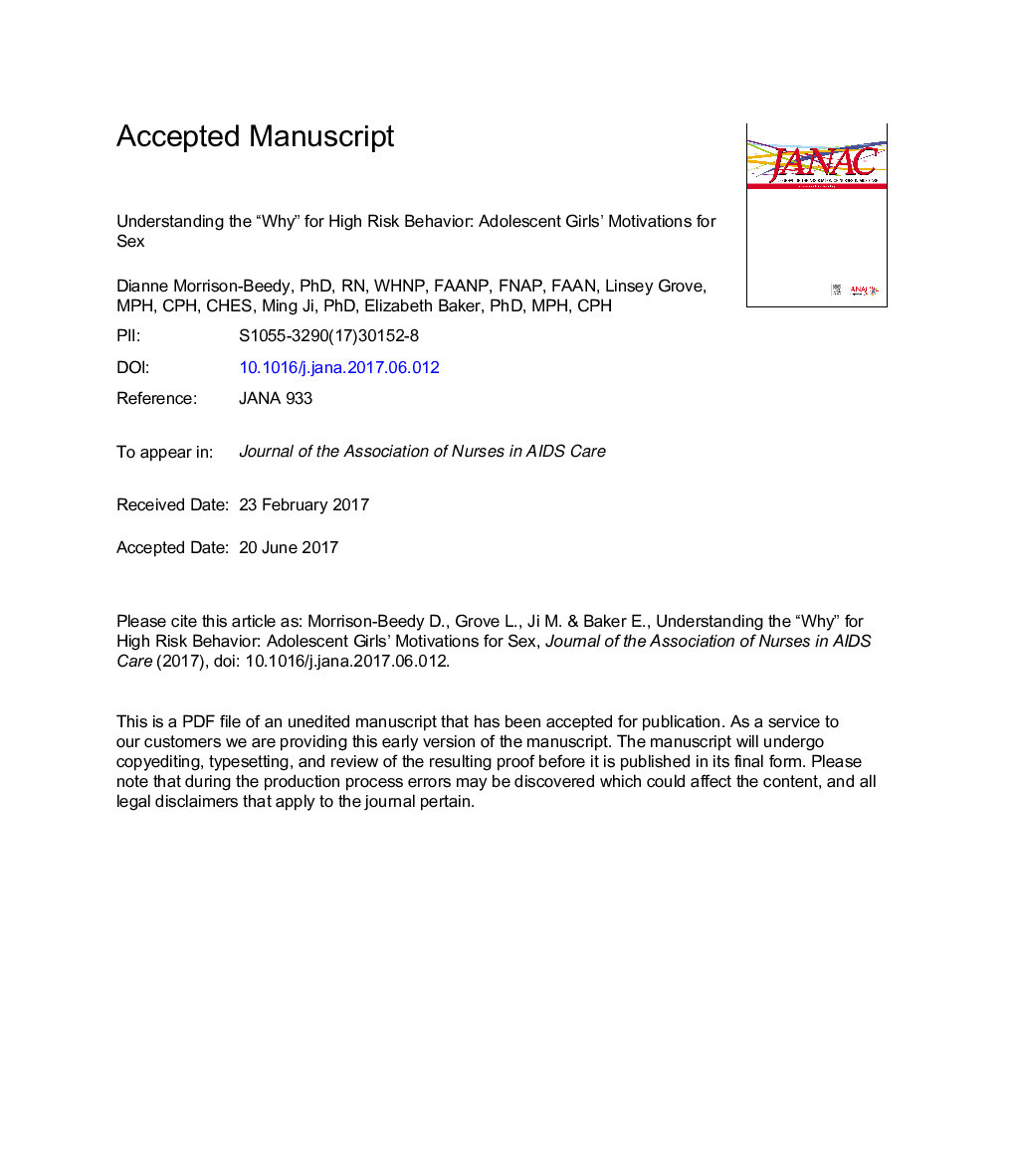| Article ID | Journal | Published Year | Pages | File Type |
|---|---|---|---|---|
| 5569042 | Journal of the Association of Nurses in AIDS Care | 2017 | 30 Pages |
Abstract
Identifying why girls participate in safe and risky sexual behaviors is key to developing successful intervention strategies. This study identified motivations for sex in 738 girls enrolled in the Health Improvement Project for Teens (HIPTeens) randomized controlled trial and analyzed differences in sex motives among at-risk subgroups. Sexually active girls, ages 15-19 years, were recruited from urban community-based settings. Baseline data were collected via audio computer-assisted self-interview surveys including a modified Sex Motives Scale based on six domains (intimacy, enhancement, self-affirmation, coping, peer pressure, and partner approval), assessing drivers of both protective and risk-promoting motivations. Statistically significant motive differences across domains were identified among subgroups with different risk profiles, including mental health issues (depression, drug and alcohol use) as well as demographic group characteristics (race, age, and parental status). Understanding why girls have sex provides an opportunity to address motivation-focused strategies that may augment intervention efficacy.
Keywords
Related Topics
Health Sciences
Medicine and Dentistry
Infectious Diseases
Authors
Dianne PhD, RN, WHNP, FNAP, FAANP, FAAN, Linsey MPH, CPH, CHES, Ming PhD, Elizabeth PhD, MPH, CPH,
